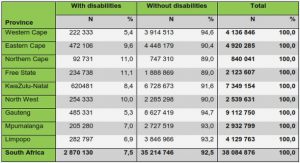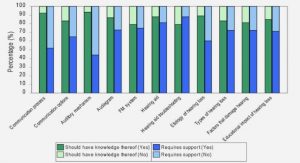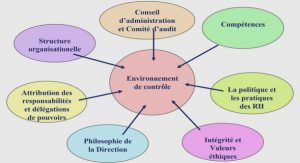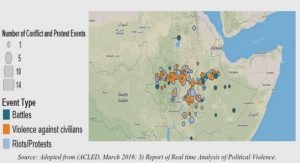Get Complete Project Material File(s) Now! »
Why priming effect is important
Plant roots are an important of organic matter-labile C in the form of exudation, sloughed off roots cells, mucilage collectively called as ‘rhizodeposition’ and dead root litter-in soil.
Living roots, being a source of labile C, have been found to induce rhizosphere priming effects. The importance of this effect can be gauged from the fact that the increase in SOM mineralization in planted soils can reach to three-fold of SOM mineralization in bare soils under similar temperature and moisture conditions (Zhu and Cheng 2011). RPE have also been shown to induce net C loss from a soil (Fontaine et al., 2004; Dijkstra et al., 2007). Moreover, various biotic and abiotic factors that have been shown to modulate the rate of RPE suggest the importance of studying this phenomenon to devise future strategies for favouring net positive sequestration under living plants and not the net positive SOM mineralization.
Among biotic factors, plant biomass (Dijkstra et al., 2006), photosynthesis (Kuzyakov and Cheng 2001), plant phenology (Fu and Cheng 2002) have been related with rate of RPE. Plant biomass and photosynthesis have been linked with RPE suggesting that the increased rate of rhizodeposition under increased plant biomass or photosynthesis increases the rate of RPE (Kuzyakov and Cheng 2001; Dijkstra et al., 2006). For annual plants, it has been shown that the RPE is higher during vegetative growth stages of plant in comparison to reproductive (or later) stages presumably due to high amount of exudation from young roots during early age of plant (Fu and Cheng 2002).
Abiotic factors like soil nutrient status, especially the availability of mineral N has also been found to influence the magnitude of RPE. Under high availability of mineral N, lesser amount of priming effect was observed and vice versa (Fontaine et al., 2004a). High availability of N reduces the N limitation and the competition for N between microbial biomass and plant roots. Under high soil fertility the microbes are more adapted to assimilate root exudates as they are less inclined to mineralize high-cost recalcitrant SOM for nutrients when the later are available almost free of cost.
Hypotheses of thesis
In the first experiment, we wanted to test the effect of plant clipping on SOM mineralization. We hypothesized that the plant clipping would decrease rhizosphere priming effect by decreasing the supply of labile C to mycorrhizae and soil microbes. We also assumed that clipping would reduce total plant N uptake due to curtailed photosynthesis thereby increasing mineral N quantity in soil. Moreover, reduced photosynthesis and decreased labile C supply after clipping was expected to change microbial community structure with the relative abundance of saprophytic fungi expected to follow the change in RPE.
In the second experiment, we tested the effect of a deep-rooted plant on the SOM dynamics in deep soil. We assumed that the deep soil microbes are energy limited like their counterparts in surface soils and are capable of accelerating SOM mineralization i.e. inducing RPE in the presence of living roots by using labile C coming from roots. Moreover, the accelerated SOM mineralization in the presence of living roots was expected to increase nitrogen mineralization. Microbial community structure especially relative abundance of saprophytic fungi was expected to correspond with the amount of RPE.
For the question of effect of temperature on RPE, we theorized that when specific enzyme activity, time and temperature dependent enzyme inactivation and microbial production of enzyme in the presence of fresh supply of labile C (e.g. in the presence of living roots) is taken into account, SOM mineralization would have a negative relationship with temperature. This theoretical framework was then validated by measuring short term (24 hours) temperature treatments as well as seasonal temperature response of RPE under living plants in a mesocosm.
To test the effect of different grassland species producing varying quantity and quality of rhizodeposits and the mineral nitrogen balance in soil they impose, six gramineae and one legume commonly found in temperate grasslands were selected. It was hypothesized that the quick growing species would induce strong amounts of RPEs in early periods while slow growing species would induce lower amounts of RPEs early on and strong RPEs in the later stages. Moreover, the leguminous species would induce important amounts of RPEs though it would stock more C than it would mineralize.
In another experiment, the possibility of high C stocks and lower RPE under high availability of nitrogen, through mineral fertilizers or natural N fixation by an N-fixing plant, was tested. It was hypothesized that under high availability of mineral N the microbial mineralization of SOM would decrease since the microbial need to acquire N from SOM would lessen due to supply of mineral N.
Approaches of the study
The most original part of approaches developed in the thesis are presented here:. A dual labelling (13C and 14C) of fresh material is needed for quantifying the priming effect and the age of soil C released by this priming (Fontaine et al., 2007). Therefore, we set up a labelling system permitting a continuous dual labelling of grassland plants in a mesocosm where plants benefited from natural light and temperature. A schematic diagram of the labelling system and picture of the mesocosm containing the planted and unplanted pots are shown in Figure 1.7. A screw compressor, a self-regenerating adsorption dryer capable of generating decarbonised air at a rate of up to 5000 standard liters per minute (SLPM) and residual CO2 below 1μmol CO2 mol-1 air, an air reservoir, gas cylinders containing fossil fuel derived CO2 and a humidifier (1m3:1m2 cross corrugated cellulose pads) constitute the main parts of the labeling system. Ambient air was taken into the system by a compressor, its CO2 and H2O contents and all other particles were scrubbed by a molecular sieve. This decarbonised air was then mixed with fossil-originated CO2 which is naturally depleted in 13C and 14C. A mass flow meter served to control the CO2 injection rate. Flow rate of the whole system was controlled by pressure regulators. During daytime, around 30 % of decarbonised dry air was diverted to one of the two molecular sieves in order to regenerate it. Therein, regeneration of molecular sieve was done every six minutes. There was no labeling during nighttime. Planted and bare soil pots were placed in mesocosm on April 1, 2009 and remained there till the end of experiment. The concentration of CO2 in the mesocosm was maintained at 400±20 ppm. The air in mesocosm was renewed twice a minute to avoid the uptake of soil-derived (unlabelled) CO2 by plants. The relative humidity within the mesocosm was maintained around 50-60 %.
Soil sampling and plant sowing
The soil used in this experiment was sampled from an upland grassland located in the environmental research observatory (SOERE) established by the French National Institute for Agricultural Research (INRA) in central France in 2003 (Theix, 45°43’N, 03°01’E). The local climate is semi-continental, with a mean annual temperature of 9°C and an average annual rainfall of 760mm. Prior to 2003; the site was managed as permanent grassland for more than 50 years (Fontaine et al., 2007). The soil is a drained Cambisol developed from granitic rock.
For sampling, the upper 10 cm of the soil profile was removed because it is rich in fresh C. Given that respiration of this pre-existing fresh C cannot be separated from that of recalcitrant soil carbon and that the presence of plants can also modify fresh C decomposition (Personeni and Loiseau 2004), it is advisable to use a soil with a lower proportion of fresh C in order to determine the effects of plants on recalcitrant SOM. Thus, soil was taken from 10-40 cm soil profile. The fresh soil was sieved at 5 mm and used to fill PVC pots (40 cm high, 9.8 cm internal diameter, content 2.87 kg of dry soil). The soil properties were: pH 6.1±0.21; clay (%) 27±1.3; soil organic carbon (g kg-1 soil) 26.7±0.37 and soil organic carbon 13C (‰) – 26.7±0.02. In April 2009, eight pots were sown with Lolium perenne (Lp) at a density of 2000 seeds m-2 and four pots were kept bare as control soil (S). Automated drip irrigation methods were used for water supply and all pots were water-saturated whenever the soil moisture decreased to 75±5% of the soil field capacity. For better handling of the plants in the mesocosm, plants were clipped (non-experimental clipping) 122 days after germination.
After non-experimental clipping, all planted pots were fertilized with nitrogen (NH4NO3, 70 kg N ha-1), phosphorus (KH2PO4, 100 kg P2O5 ha-1) and potassium (KNO3, 200 kg K2O ha-1). The control soils (S) were not fertilized. Plants were allowed to fully develop their root system during 190 days before the experimental clipping was administered. Four planted pots were clipped 5 cm above the soil surface (clipped treatment, CP). Four planted pots were left intact as an unclipped plant control (P). Carbon dioxide and its isotopic composition released by the plant-soil system were measured for all treatments (S, P and CP) immediately and 30 days after experimental clipping. The effect of clipping on SOM mineralization was determined by comparing respiration from P and CP. Plant biomass, plant C and N content, soluble soil organic C, mineral nitrogen, microbial biomass and PLFA were measured following destructive harvesting of pots 30 days after clipping.
To determine whether clipping has similar effect on SOM mineralization across grassland, monocultures of six species namely Trisetum flavescens (Tf), Poa trivialis (Pt), Festuca arundinacea (Fa), Bromus erectus (Be), Brachypodium pinnatum (Bp) and Trifolium repens (Tr) were also established. These species were sown and cultivated in exactly the same conditions as the model species Lolium perenne. However, the effect of clipping on SOM mineralization was determined by measuring soil respiration in the same pot before and 24 hours after plant clipping. This approach was adopted to reduce the variation.
Labelling system & mesocosm
The experimental set-up used is shown in figure 1 (Supplementary information). It consisted of two parts: a labelled-air production system and a mesocosm containing planted and baresoil pots. Details on production of labeled air are available in Supplementary Information. Briefly, ambient air was taken into the system by a compressor and scrubbed by a molecular sieve, removing CO2 , H2O and all other particles. The decarbonised air was then mixed with 13C-depleted CO2 of fossil-fuel origin ( 13C: -38.55 ± 0.07 ‰) and passed through a humidifier (1m3:1m2 cross corrugated cellulose pads). The water flow in the humidifier was regulated such that the relative humidity of labeled air reaching the mesocosm was maintained around 50-60%. This moistened air had a CO2 concentration of 400 ± 20 ppm before entering the mesocosm.
The mesocosm comprised an iron box with a plexiglass screen mounted on it (mesocosm dimensions: 350 × 140 × 140 cm). The advantage of using plexiglass is that it does not change the wavelength of sunlight entering the mesocosm. All planted and bare-soil pots were placed in mesocosm, and continuously ventilated with air produced by the labeling system. The volume of air in the mesocosm was renewed twice a minute so that the unlabelled air respired by soil would not change the labeling signature of air present in the mesocosm. We verified with a smoke apparatus that turbulences in the mesocosm were sufficient to ensure complete mixing of air. The ventilation of the mesocosm also maintained a temperature difference of 1-2°C between the inside and the outside of the mesocosm.
Respiration measurement
All pots with plants were put back in the mesocosm for 24 hours after clipping to permit the clipping treatment to take effect on the soil processes through changes in plant photosynthetic and transpiration rates. Pots were then taken out of the mesocosm and sealed in air-tight PVC chambers (height 100 cm, diameter 15 cm) for 24 hrs. The absence of light stopped photosynthesis and stopped the plant absorption of soil-respired CO2. Carbon dioxide released by the plant-soil system was trapped in 200 ml of 1M NaOH, soda lime traps placed in the respiration chambers. By conducting additional measurements in the respiration chambers using gas chromatography, we established that more than 99% of the CO2 respired by the pot (soil + plant) over 24 hours was trapped successfully in the NaOH solution. Total carbon trapped in NaOH was measured with a total inorganic-C analyzer. The 13C abundance of trapped CO2 was analyzed with an Isotope-Ratio Mass Spectrometer (IRMS) after precipitating the carbonates with excess BaCl2 and filtration. The soil-derived CO2-C (Rs, mg CO2-C kg-1 dry soil day-1) was separated from plant-derived CO2-C (Rp, mg CO2-C kg-1 dry soil day-1) using mass balance equations.
Table of contents :
CHAPTER 1
GENERAL INTRODUCTION
I. CONTEXT OF STUDY
I.1. GLOBAL CARBON CYCLE
I.2. SOIL ORGANIC CARBON
I.3. INTERACTION OF C CYCLE WITH OTHER CYCLES
II. STATE OF THE ART
II.1. INTRODUCTION TO PRIMING EFFECT
II.2. MEASURING PRIMING EFFECT
II.3. WHY PRIMING EFFECT IS IMPORTANT
II.4. KNOWLEDGE GAPS
III. OBJECTIVES OF THESIS
III.1. HYPOTHESES OF THESIS
III.2. APPROACHES OF THE STUDY
IV. THESIS LAYOUT
V. REFERENCES
CHAPTER 2 PLANT CLIPPING DECELERATES THE MINERALIZATION OF RECALCITRANT SOIL ORGANIC MATTER UNDER MULTIPLE GRASSLAND SPECIES
I. SUMMARY
II. INTRODUCTION
III. MATERIALS & METHODS:
III.1. SOIL SAMPLING AND PLANT SOWING
III.2. LABELLING SYSTEM & MESOCOSM
III.3. RESPIRATION MEASUREMENT
III.4. SOIL AND PLANT ANALYSES
III.5. PLFA MEASUREMENTS
III.6. STATISTICAL ANALYSES
IV. RESULTS
IV.1. PLANT BIOMASS AND ISOTOPIC COMPOSITION
IV.2. RESPIRATION FLUXES
IV.3. SOLUBLE C & MINERAL NITROGEN IN SOIL
IV.4. MICROBIAL BIOMASS & COMMUNITY COMPOSITION
V. DISCUSSION
VI. REFERENCES
CHAPTER 3 LIVING ROOTS INDUCE THE MINERALIZATION OF 15, 000 YEARS OLD ORGANIC C FROM DEEP SOIL OF A TEMPERATE GRASSLAND
I. SUMMARY
II. INTRODUCTION
III. MATERIALS & METHODS
III.1. SOIL SAMPLING AND PLANT SOWING
III.2. RESPIRATION MEASURES
III.3. SOIL CARBON FRACTIONS
III.4. SOIL NITROGEN
III.5. PLFA MEASUREMENTS
III.6. STATISTICAL ANALYSES
IV. RESULTS
IV.1. SOM MINERALIZATION & RHIZOSPHERE PRIMING EFFECT
IV.2. MINERAL NITROGEN IN SOIL
IV.3. ROOT LITTER AND SOIL ORGANIC C
IV.4. MICROBIAL BIOMASS & COMMUNITY COMPOSITION
V. DISCUSSION
VI. CONCLUSION
VII. REFERENCES
CHAPTER 4 TEMPERATURE RESPONSE OF ORGANIC C MINERALIZATION: A NEW EXPERIMENTALLY TESTED THEORY BASED ON ENZYME INACTIVATION AND MICROBIAL ENERGY LIMITATION RECONCILES THE RESULTS OF LAB AND ECOSYSTEM EXPERIMENTS
I. SUMMARY
II. INTRODUCTION
III. THEORY
IV. EXPERIMENTAL TEST
V. MATERIALS AND METHODS
V.1. SOIL SAMPLING AND EXPERIMENTAL DESIGN
V.2. LABELLING SYSTEM & MESOCOSM
V.3. RESPIRATION MEASUREMENT
V.4. STATISTICAL ANALYSIS
VI. RESULTS
VI.1. EFFECT OF PLANT ON SOIL RESPIRATION
VI.2. EFFECT OF TEMPERATURE ON FRESH C RESPIRATION
VI.3. TESTING THE THEORY: EFFECT OF TEMPERATURE ON RECALCITRANT C MINERALIZATION
IN PLANTED AND BARE SOILS
VII. CONCLUSION
VIII. REFERENCES
CHAPTER 5 ARTICLES IN PREPARATION
PART 1: THE EFFECT OF SIX GRAMINEAE AND ONE LEGUMINOUS SPECIES ON SOIL ORGANIC MATTER DYNAMICS IN TEMPERATE GRASSLAND
PART 2: DOES HIGHER AVAILABILITY OF N DECREASE SOIL ORGANIC C MINERALIZATION AND STORE MORE ORGANIC C?
PART 3: DECOUPLING THE EFFECT OF ROOT EXUDATES, MYCORRHIZAE AND ROOTS ON SOIL C PROCESSES IN THREE TEMPERATE GRASSLAND SPECIES
REFERENCES
CHAPTER 6 ROLE OF PLANT RHIZOSPHERE ACROSS MULTIPLE SPECIES, GRASSLAND MANAGEMENT AND TEMPERATURE ON MICROBIAL COMMUNITIES AND LONG-TERM SOIL ORGANIC MATTER DYNAMICS
I. GENERAL DISCUSSION
II. PERSPECTIVES
III. REFERENCES:
ANNEX OF THE THESIS
ACELLULAR RESPIRATION: RECONSTITUTION OF AN OXIDATIVE
METABOLISM BY ENZYMES RELEASED FROM DEAD CELLS






